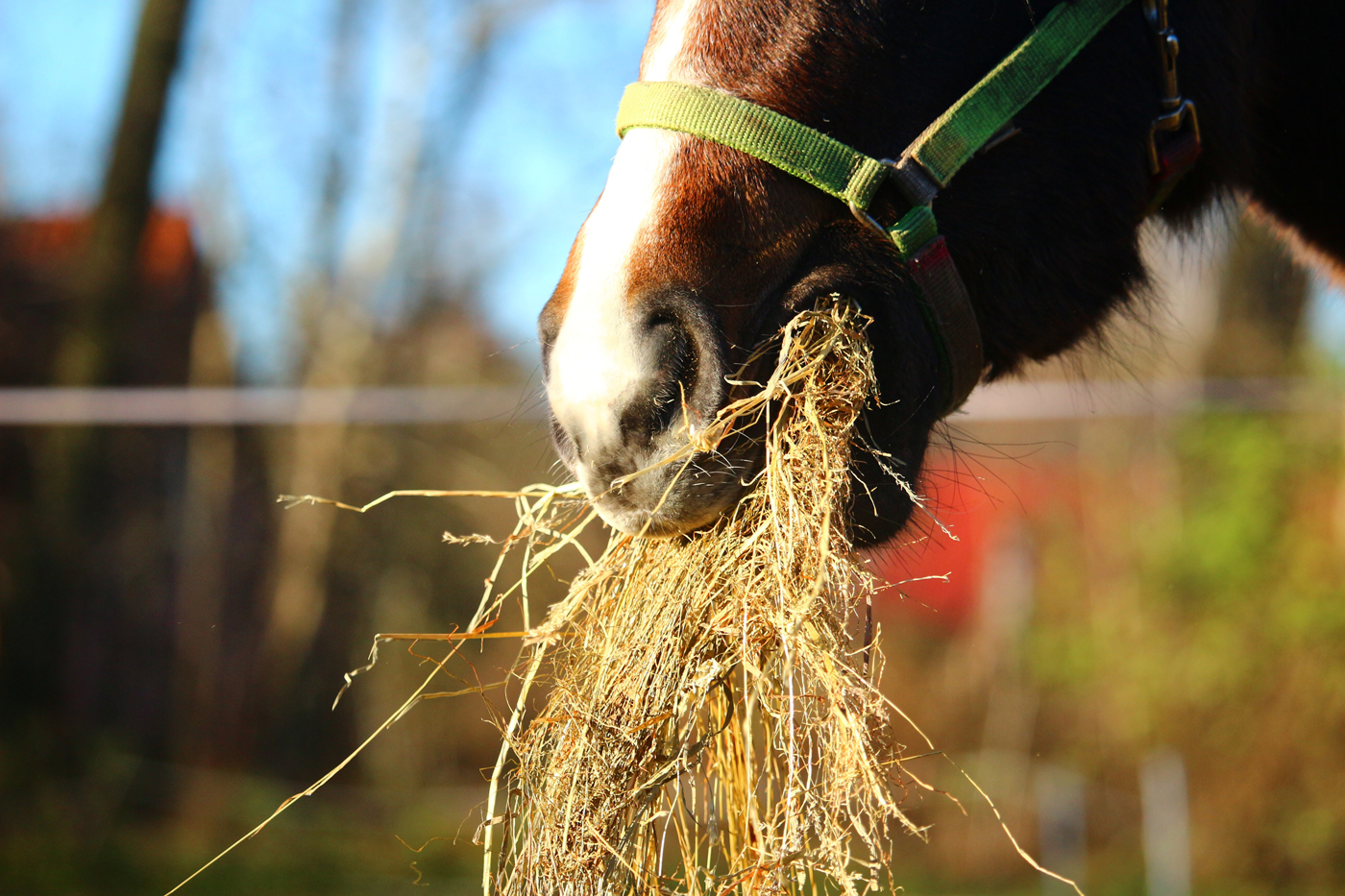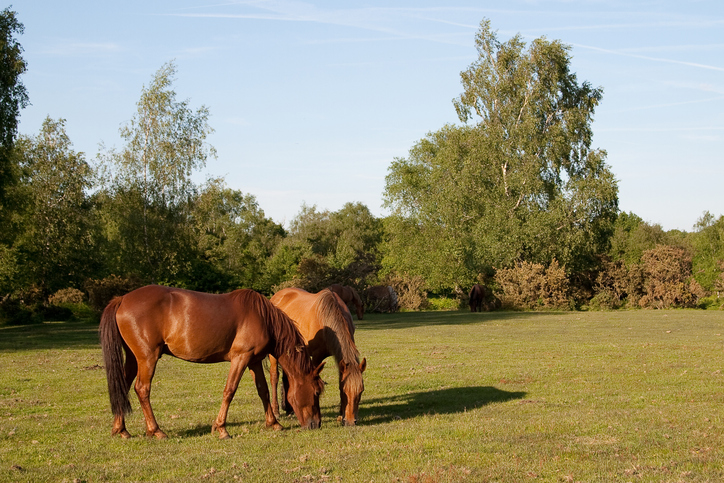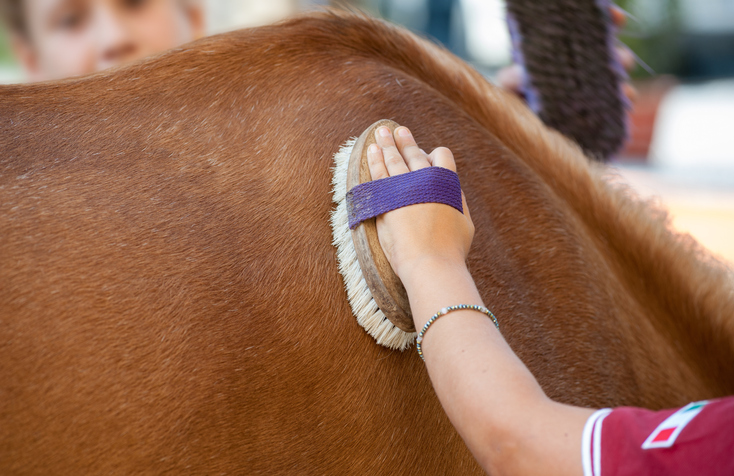As summer draws to a close our minds will soon turn to the autumn season and the benefits this cooler season brings. But alongside changes in the leaves, the landscape, and the lower temperatures there are a number of hazards to keep an eye out for. Although rare, one particular problem for horse owners is acorn poisoning. Read our guide to find out the signs of acorn poisoning, how to treat it, and how to prevent it from happening in the first place.
Staying ahead of seasonal changes is just one of the many jobs horse owners have to do each year. Just like updating their horse insurance to make sure the policy is still suited to their needs. Contact the experienced team at Equesure today to discuss your options for keeping protected in the year ahead.
Acorn poisoning in horses
Oak trees are a common feature of the British landscape, so there will probably be a few on or near where your horse grazes. In the autumn, as the acorns begin to fall from the trees you might see your horse eat one of two. Indeed, some horses develop a peculiar liking for the taste of acorns, and will happily seek them out in their field. Some owners have reported horses with a taste for acorns bordering on addiction. Unfortunately, acorns are in fact poisonous to horses, no matter how tasty they find them!
While eating a few acorns isn’t likely to cause a problem (particularly if they have a normal high fibre grass or hay diet) this isn’t always the case. As with everything equine-related, different horses will have different reactions and tolerance to acorns.
Some equines are just naturally more susceptible to acorn poisoning, so even a tiny amount could make them sick. There’s really no way to accurately predict how your horse will be affected by eating them or how much is a ‘safe’ amount. This is why horse insurance is so important so you can afford any emergency treatment that might be needed.
Certainly, consumption of acorns in larger amounts can lead to poisoning due to the Gallic Acid and Tannic Acid they contain. These acids are toxic to horses and can cause liver, kidney and intestinal damage if they consume them.
Be aware, it’s not just the acorns you need to look out for. Oak leaves and branches also contain the toxins and can cause poisoning. Because acorns have such a bitter taste, poisoning is comparatively rare but it does still happen. So, during autumn keep a vigilant eye out if you allow your horses to graze anywhere near oak trees.

Signs of acorn poisoning
If your horse has only eaten a handful of acorns then you may never realise they’ve done so. Usually, the first sign an owner will notice is finding the empty acorn husks in their droppings. If this happens then you need to keep a careful eye on them as eating larger amounts can cause liver and kidney damage or stomach upsets. Signs of acorn poisoning can include:
- Acorn husks in droppings
- Depression
- Reduced appetite
- Dehydration
- Lethargy
- Lying down more
- Mouth ulcers
- Colic
- Fluid build-up in the legs
- Constipation
- Diarrhoea containing blood
- Blood in urine
Clearly, many of these signs are similar to other illnesses and health conditions. So it can be tricky for the untrained eye to pinpoint the problem. Indeed, there is no specific test to run to diagnose acorn poisoning. While you know your horse best, if you think your horse has eaten acorns and become unwell, always seek early advice from your vet.
Early signs can be very subtle and easy to miss at the beginning, but acorn poisoning can develop rapidly within mere hours of ingestion. If left untreated, acorn poisoning can be very severe and even lead to death.
Having horse insurance in place means a professional can perform a quick exam to determine the problem. In such health emergencies, every minute counts.
Treatment for acorn poisoning in horses
Acorn poisoning is difficult to treat as there is no known antidote to the acorn toxins. Instead, horses suffering from acorn poisoning are treated in an effort to minimise any damage to the internal organs. This will depend on the amount of toxins ingested and how sick they are.
Horses may be given fluids intravenously to rehydrate them, flush out the toxins and support kidney function. This will also help with fluid loss from diarrhoea and assist in the prevention of shock in severe poisoning cases.
If treatment is started early enough, activated charcoal is often given to soak up toxins in the gut and prevent damage to the intestines. This allows them to be naturally excreted from the horse’s system. Epsom salts may also be given to help the toxins move through the gut but never give your horse medication unless a vet has prescribed it.
Sometimes laxatives and other fluids may be given in any attempt to soften the horse’s droppings and manage any constipation. If your horse is suffering from painful colic then painkillers may also be prescribed. The British Horse Society (BHS) also advises that encouraging the horse to eat hay and drink water will help dilute the toxins in the body.
While much of this treatment can be performed at home, if your horse is particularly ill, they may require hospitalisation for treatment. After all, horses suffering from severe acorn poisoning may need more effective monitoring to assess their response to treatment.
Preventing acorn poisoning
While some horses are more prone to acorn poisoning than others, there are some factors that increase the risk. If the pasture is overgrazed or of poor quality then the availability of forage will be reduced. This will then increase the likelihood of a horse eating acorns or oak leaves and branches. Another risk factor can be after heavy winds or storms where more acorns and leaves than normal are on the ground.
To reduce the risk of your horse suffering from acorn poisoning, try the following tips:
- Avoid using the field or area close to the oak trees until the acorns have been swept up.
- Remove fallen oak tree branches and leaves after storms.
- Don’t let your horse graze under oak trees, particularly when acorns are dropping.
- Leave good quality forage in a spot away from the oak trees. Unless your horse has a real taste for acorns, they’ll much prefer the forage you’ve put out.
- Don’t let your horse eat leaves or branches from an oak tree, either. They also contain the toxins.
- Fence off parts with accessible oak trees during the autumn to prevent access to acorns on the pasture. Ideally to the branch span so the horse can’t get to any acorns.
- Put pigs into the area as they enjoy eating acorns and won’t get poisoned by them. Known as pannage, this technique has been used in Britain’s forests for hundreds of years. Although pigs aren’t generally considered a good choice of long-term pasture mate for a horse.

Other autumn health hazards
It isn’t just falling acorns that can cause a health problem for horses in the autumn. Here are some of the other hazards that could leave you glad you had horse insurance!
Sycamore poisoning
While you’re guarding against hazards from oak trees, also be watchful if your horse’s field has sycamores nearby. Their helicopter-shaped seeds and saplings have been linked to an often-fatal disease called seasonal pasture myopathy, or atypical myopathy. Vets attribute this disease to the presence of Hypoglycin-A (HGA) in the seeds and saplings.
The BHS says that when HGA is eaten it’s converted into a toxin within the horse’s body. This toxin rapidly slows down or even stops energy production in the horse’s muscles. The BHS also has some top tips on prevention well worth reading.
It’s believed younger horses and those with a genetic predisposition are more susceptible to the disease. However, any equine on sparse pasture might end up overeating sycamore seeds and saplings and developing the disease. Signs of the disease include:
- Muscle stiffness
- Weakness and depression
- Sweating and elevated heart rate
- Breathing difficulties
- Fatigue
- Reluctance to walk
- Colic
- Trembling
- Brown or dark, reddish urine
Laminitis
The extremely painful and debilitating condition laminitis isn’t just associated with the lush new grass growth in spring. It can also strike your horse in autumn when the increased rainfall causes a resurgence in grass growth just before it turns dormant for winter.
It's therefore vital to keep track of your horse’s condition in the autumn as sudden weight gain from over-indulging can be a trigger for laminitis. Keep your horse working and training, and watch the weather. A run of cool nights and warm days can soon bring dry grass back into spring lushness at any time of year.
For more information on the causes, symptoms, treatment, and prevention of laminitis, the Blue Cross animal charity has all you need.
Thrush
As rainfall increases during the autumn your horse’s hooves can come under attack in more ways than one. Thrush is a very unpleasant fungal infection that literally eats away at your horse’s soft and flexible frog. Unfortunately, you may not notice it until you see or smell the black infected slime oozing from the infected part. The best way to treat thrush is to thoroughly clean the frog with warm water and remove any necrotic debris. Then apply an antifungal treatment and keep the hoof clean and dry.
Thrush has a habit of coming back, so you’ll need to give any yard and gate areas a thorough clean to kill off the fungus. There are plenty more common hoof problems in horses worth keeping a lookout for. Remember, if you take action quickly enough some hoof problems can be managed at the stable – avoiding a hefty vet bill in the process!
Rain scald
Constant wet weather can also lead to a skin infection called rain scald. If your horse’s skin becomes saturated for long periods and can’t dry out then it softens and allows infection to occur. As with most infections this often affects horses with an already weakened immune system or who are already in poor condition. However, it can also be caused by leaking or non-breathable turnout rugs. Poor air circulation under the rug means the horse’s back is unable to dry off and rain scald will occur.
Rain scald is characterised by patchy hair loss along the back and quarters. The skin may also develop sores and weeping lesions.
To prevent rain scald, ensure they have effective shelter from the rain and you’ve invested in the right type of rug for the conditions. Regular brushing is also a great way to keep the coat in tip top shape and avoid rain scald. We’ve got some great advice on caring for your horse in wet weather in our recent Equesure guide.

Mud fever
If you’re seeing rain scald then it’s also possible to come across the related condition of mud fever. Usually associated with wet and muddy conditions, mud fever causes the skin of the legs and the stomach to become inflamed and scaly. In the worst cases, a horse may develop a high temperature or fever.
To prevent this from happening, always ensure legs are cleaned well after time spent out in the field. If the horse has clipped legs, apply a barrier cream to stop the skin from becoming saturated.
Get your equine friend protected through Equesure
Whatever the time of year, having the right horse insurance in place when you need it is vital. After all, if your equine friend develops a painful health condition you’ll want them to receive the best treatment and medication.
Equesure’s team specialise in equine insurance and has over 60 years of combined equestrian knowledge. If you want a bespoke plan tailored to you and your horse then Equesure is the one to call.
When it comes to veterinary fees, our policies offer three options:
- Option 1 – £4,500 per incident with unlimited claims in the year.
- Option 2 – £7,500 per incident with up to £15,000 in the year.
- Option 3 – £5,000 per incident with £2,500 top up for life-saving surgery.
Discounts may be available if you insure more than one horse.
Call our dedicated team today and get a quote for horse insurance.






